Jag försöker låta bli
How can we live and work with craft as people in an age of global climate crisis? What must we change in order for us to work empathically and in harmony with our surrounding world? "Jag försöker låta bli" is my graduate work for Konstfack University College of Arts, Craft and Design, and in this work I try to go deeper and further in order to grasp what it means to exist among the constant becomings of our world.
I am looking for balance as I twist fibre into thread and into rope, and as I suspend rock- and human bodies into temporary sculptures. The forest whispers and speaks. I have been out here for many days, for many weeks. Every day, something changes.
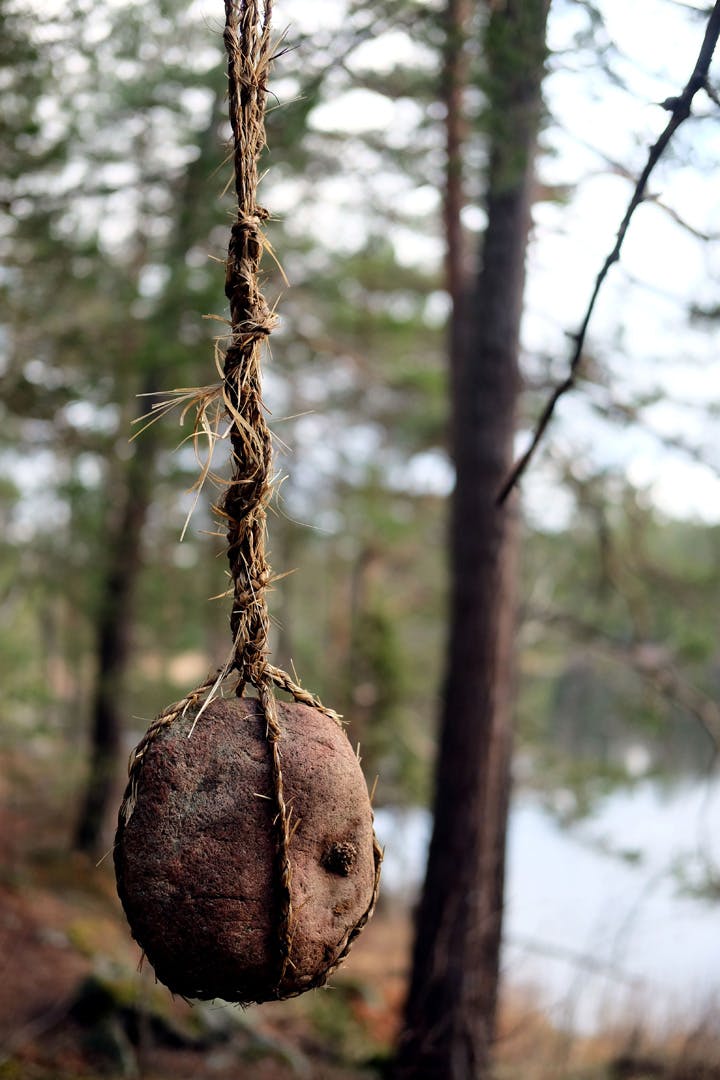
I look for inspiration in phenomenologist thought, alchemy, shamanism and daoism, as well as in the active making of craft and art. In the beginning of the project I met with shamans who took walks with me and told me of their practice. I learned of different shamanic traditions and studied alchemic texts in order to learn of the history of metallurgy and craft, but even before that I was introduced to spirituality via phenomenology, through the doctorate thesis of Jonna Bornemark.
Every path seemed to lead to the same well as I was encouraged to pause, observe, feel and listen to my surroundings. To not force or analyze, but just listen and follow.
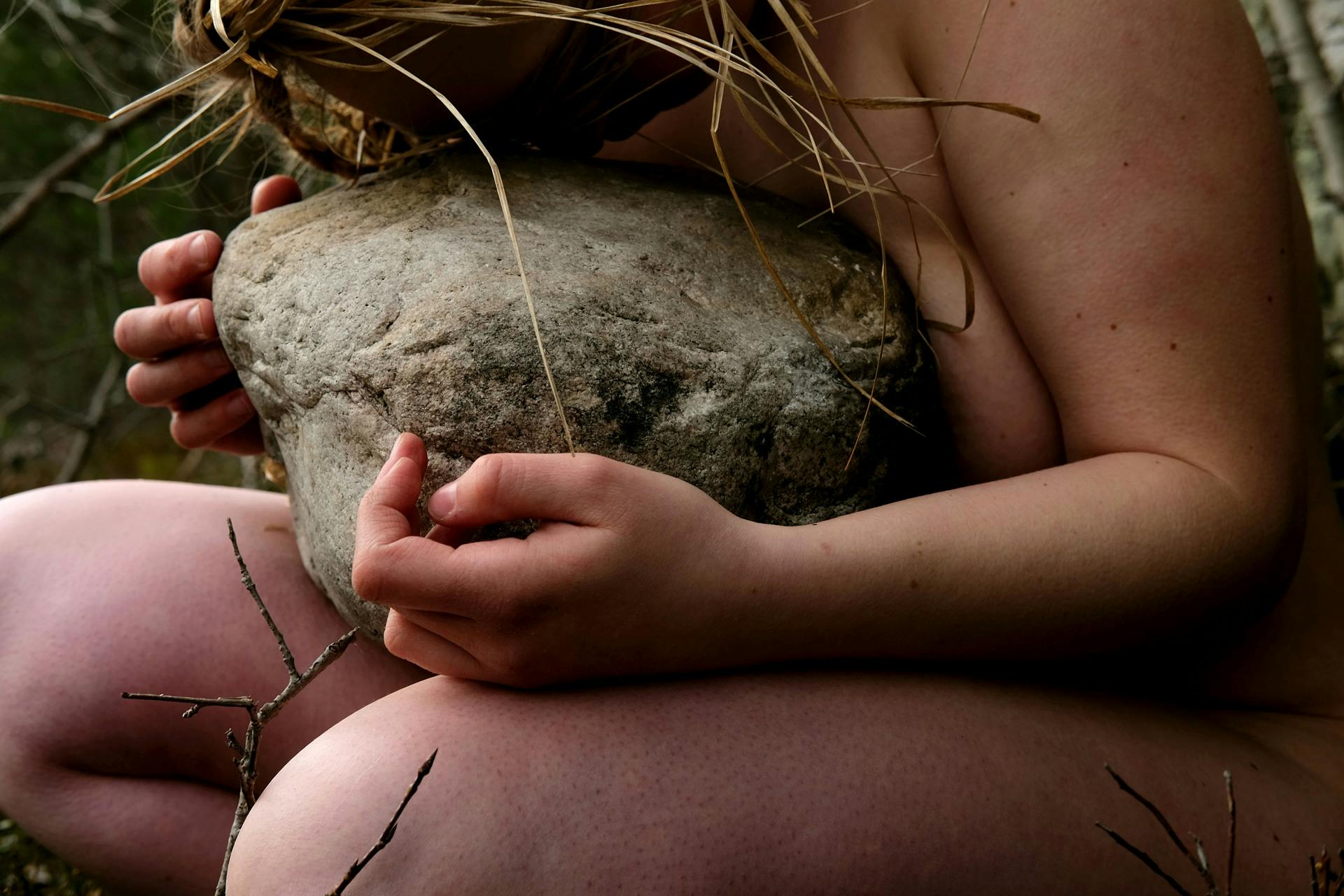
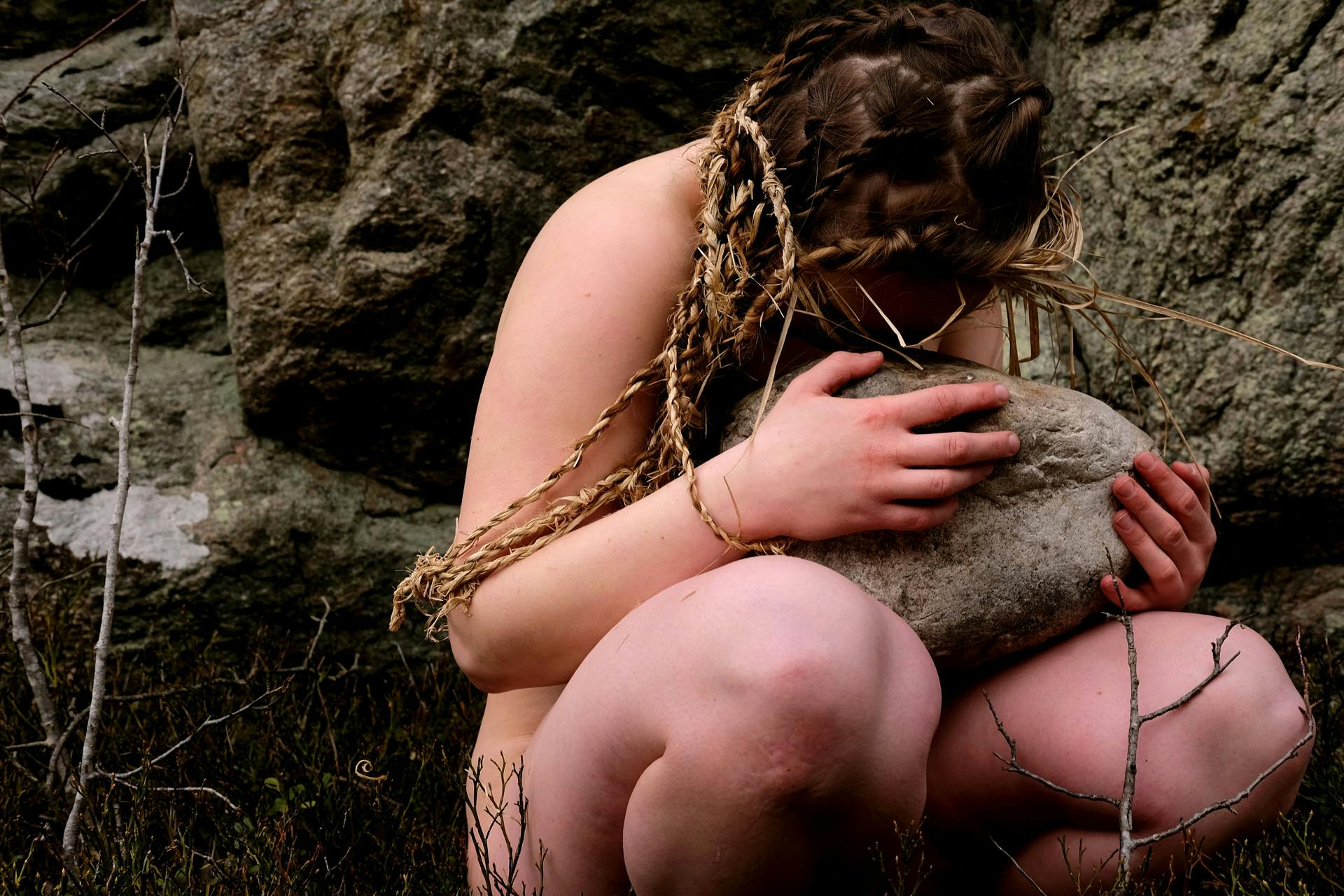
My work centers around telling stories, crafting and material exploration as well as bodily awareness and performance. In my spiritual studies and experience, there were three re-occuring lines: those of the body, the Spirit and the soul, which also point in the direction of space, time, and the awareness, or experience, of existence. That awareness, the experience of being fully present in the given time and space, is something we can not escape while working with craft. The focus keeps us there, present, and we become with the materials, and bodies, around us.

I grew flax over the summer, watched the plants grow taller and bloom. In the autumn I prepared the fibre, first retting and then treating the plants. I learned how to spin the fibre into thread, and I let the simple yet complex twist guide me forward, on a way crafted in thousands of years by all the people who came before me.
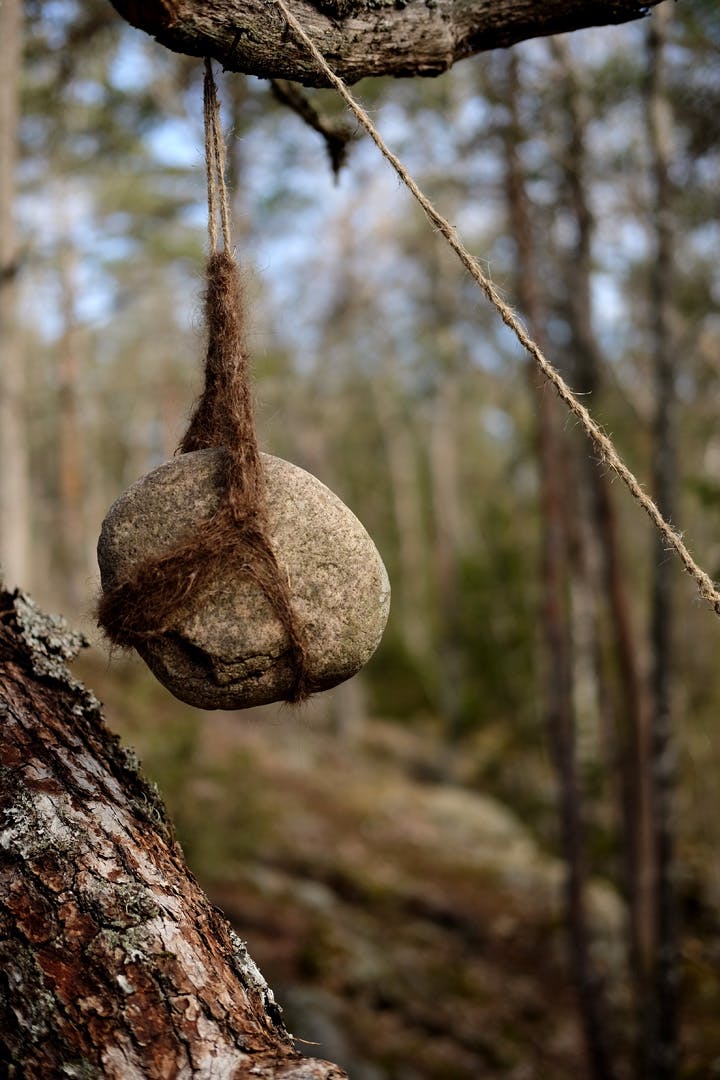
In February, I spent two weeks alone in a cabin by the sea. No heat, no electricity, barely any human contact. Two storms hit during my stay, and I learned what it means to be small. What it means to be human, moving among the processes of the world. This is when I started making ropes from plants and hanging heavy rocks in the trees by the storming sea. This is when I started contemplating balance.
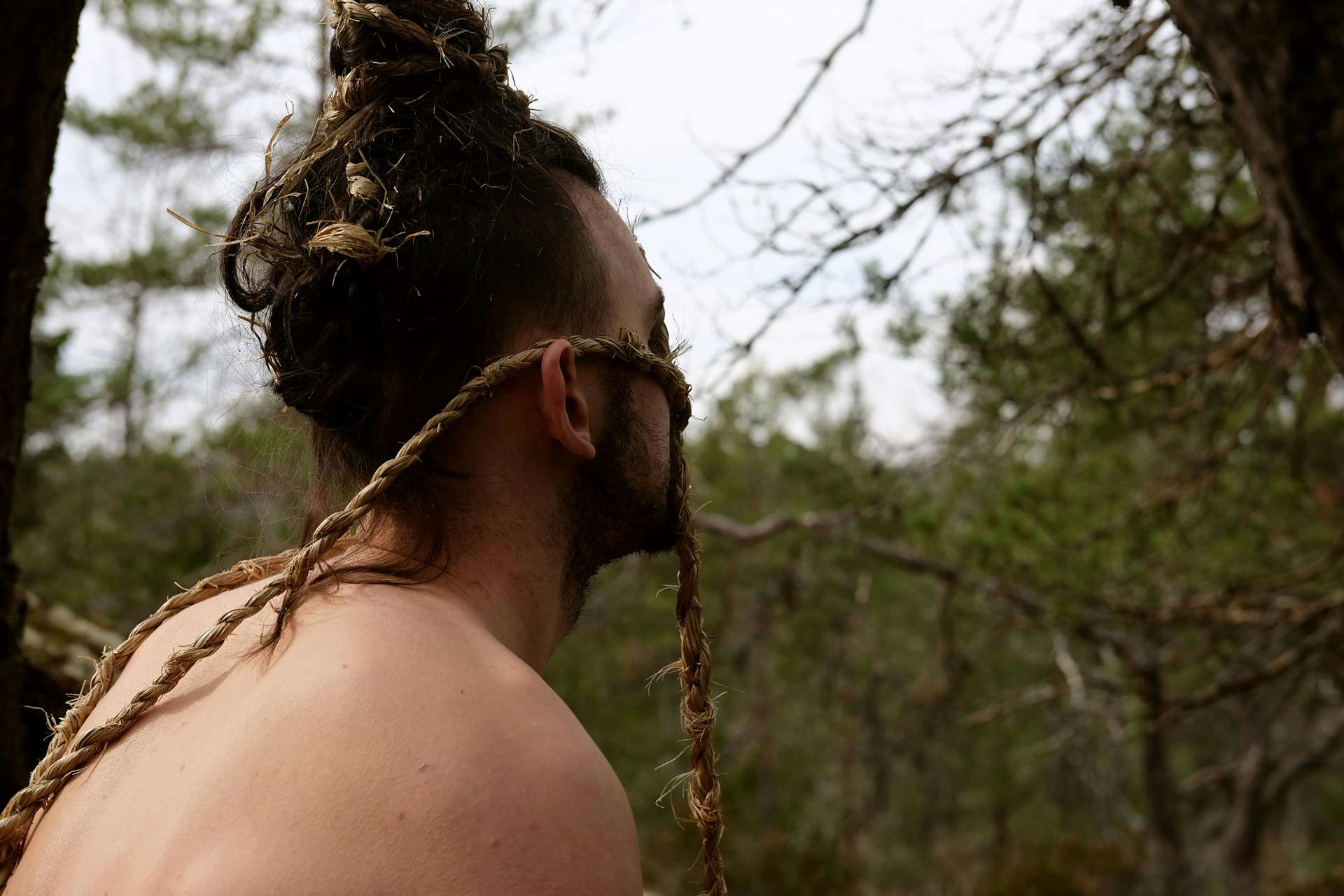
In the work, body and material are synonymous concepts drifting in and out of each other, enabling and shaping each other, becoming together. Because we all have a body in this world, a physical presence. Likewise, we have a presence in time; a presence right now, in the given moment, as well as a history of many moments in which we have existed.
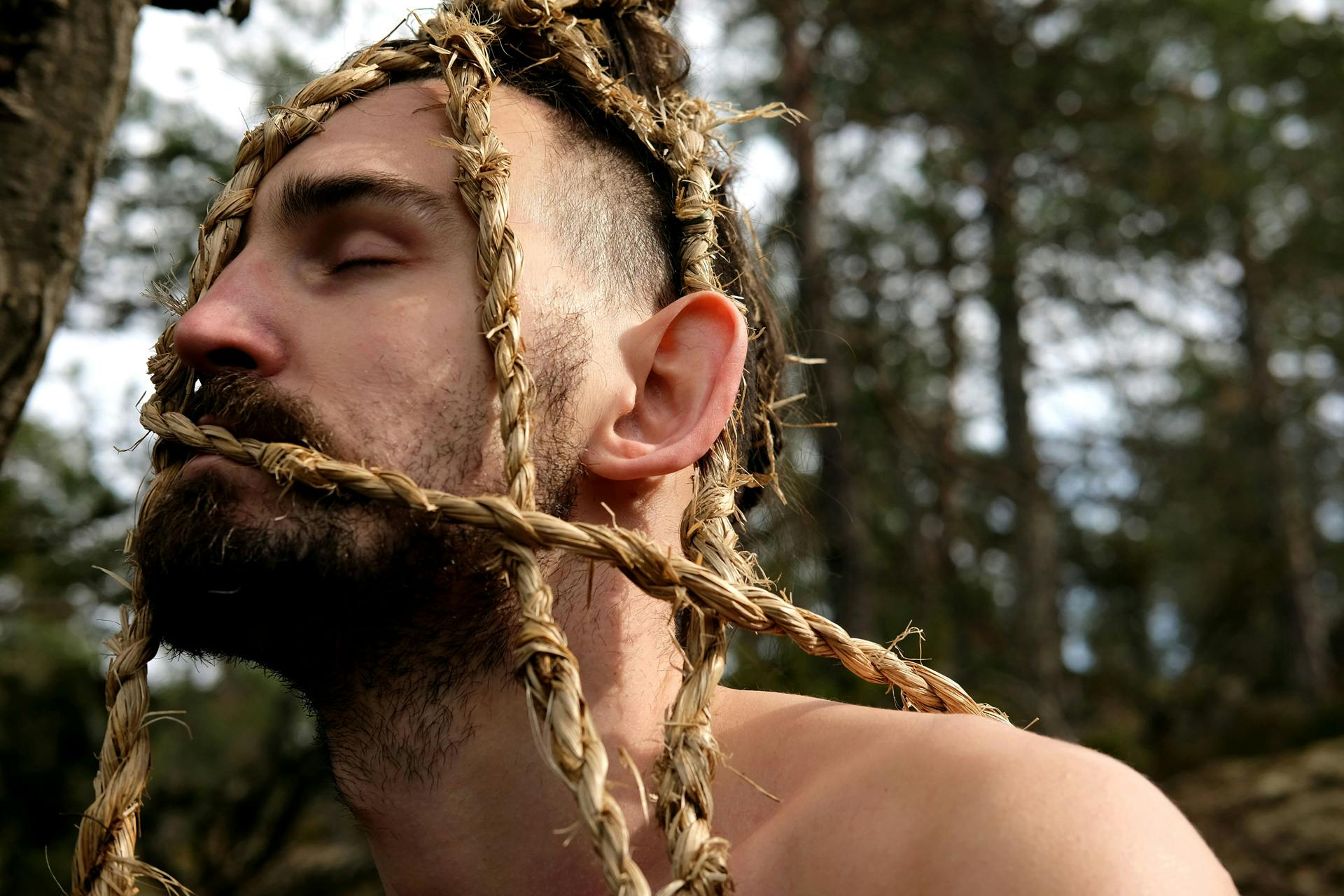
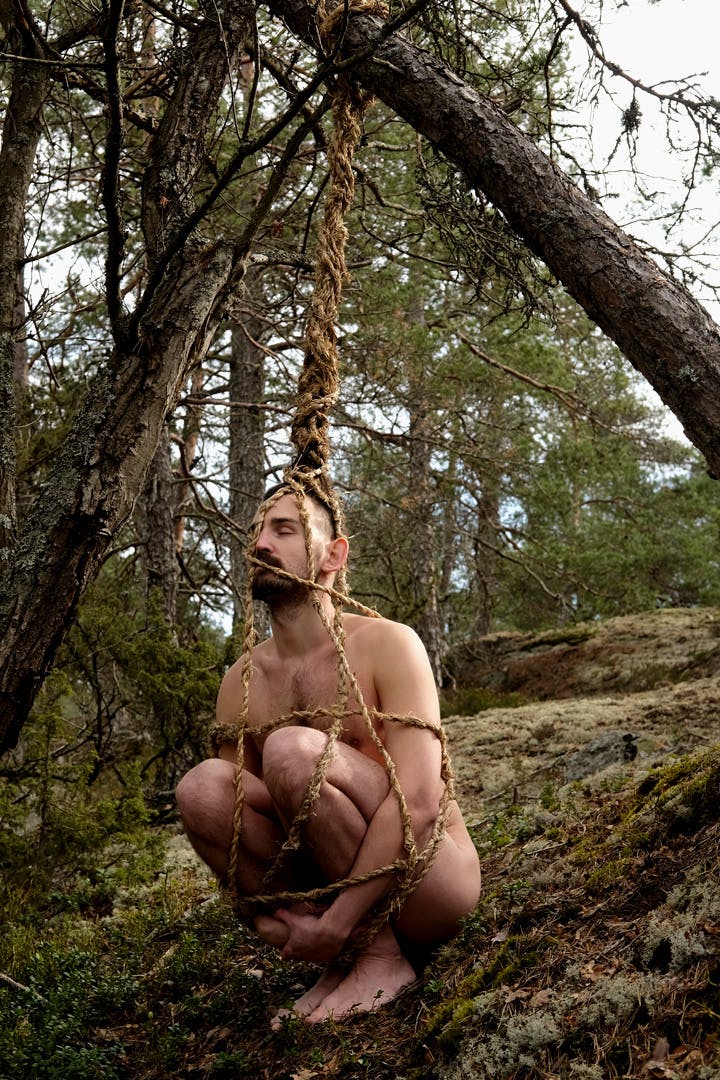
I am looking to meet my surroundings not always on my own terms, but by changing, adapting and compromising myself. This helps bring an awareness that unites me with the bodies around me, placing me not above but amidst constant becomings. Because everything has a history of becomings, and I am no more, nor less, than any other given thing in any other given moment. We are becoming together.
I try to give in, let go, and let it all become.
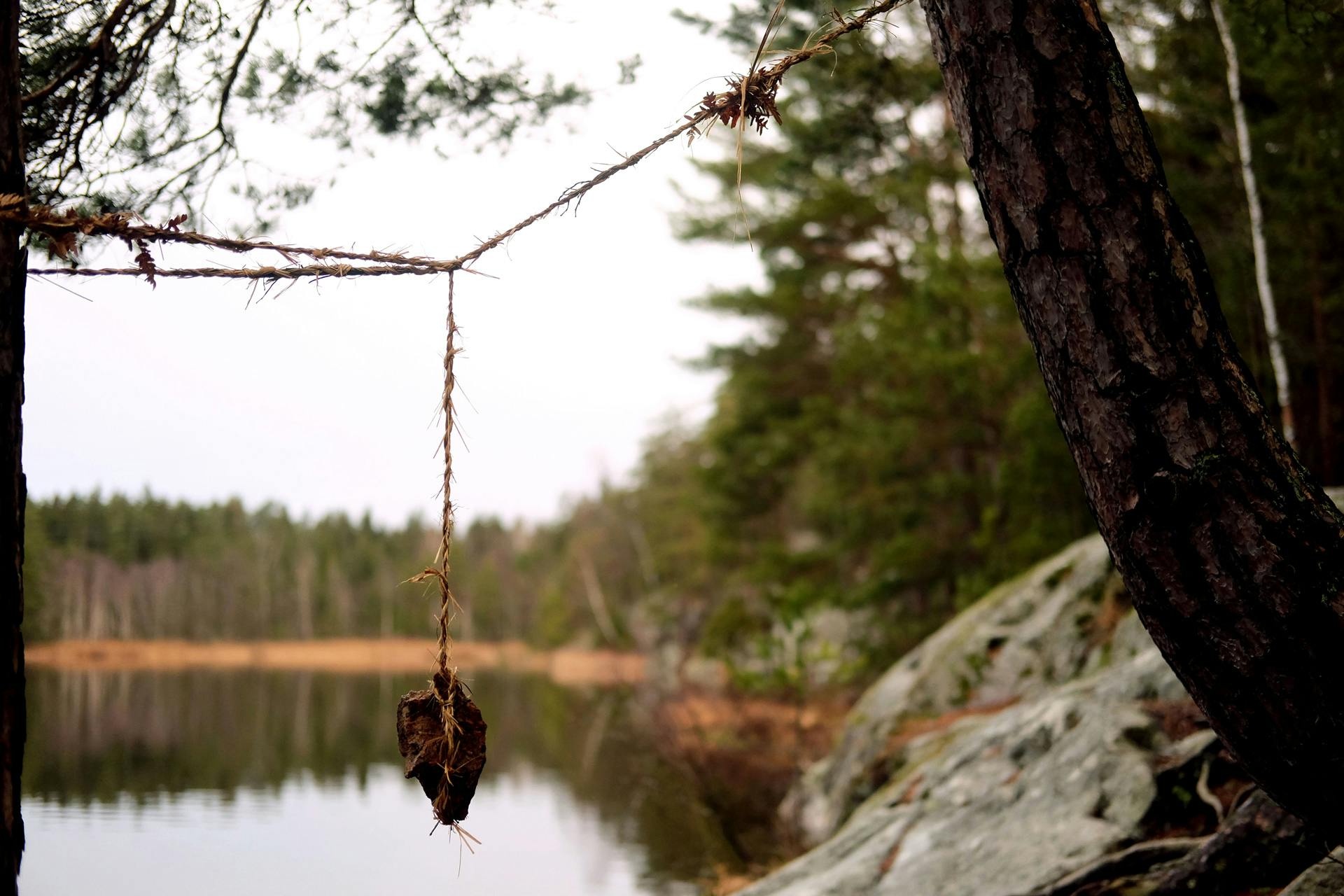
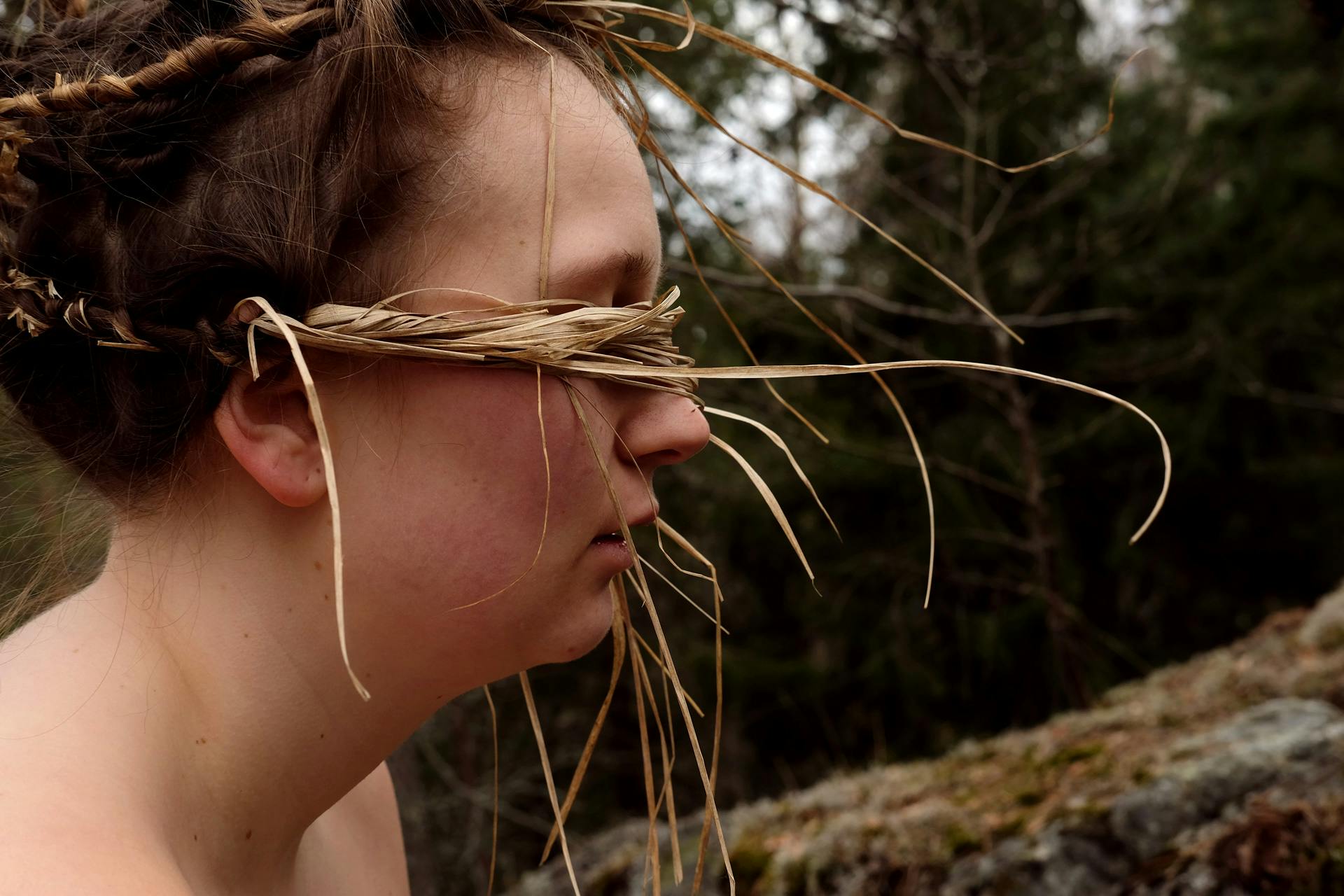
As the Covid pandemic closes doors across the world, including the doors to my school and the workshops, I continue to work in the forest. I bring models, hot tea, ginger and wool underwear. I find rocks, plants, movement of shadows from the occasional sun and changes in colour of the water surface. I film, I tie, I focus, I rest.
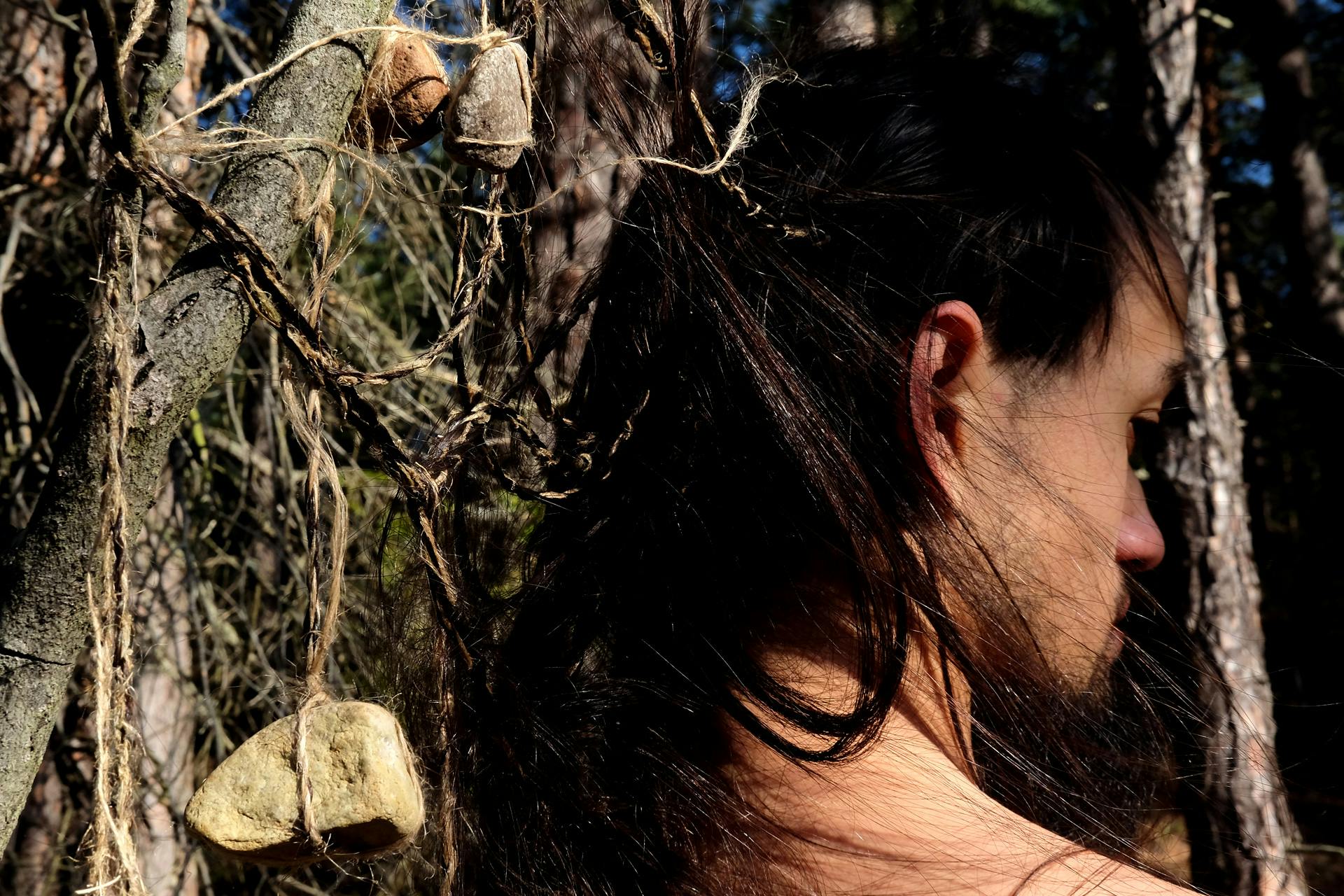
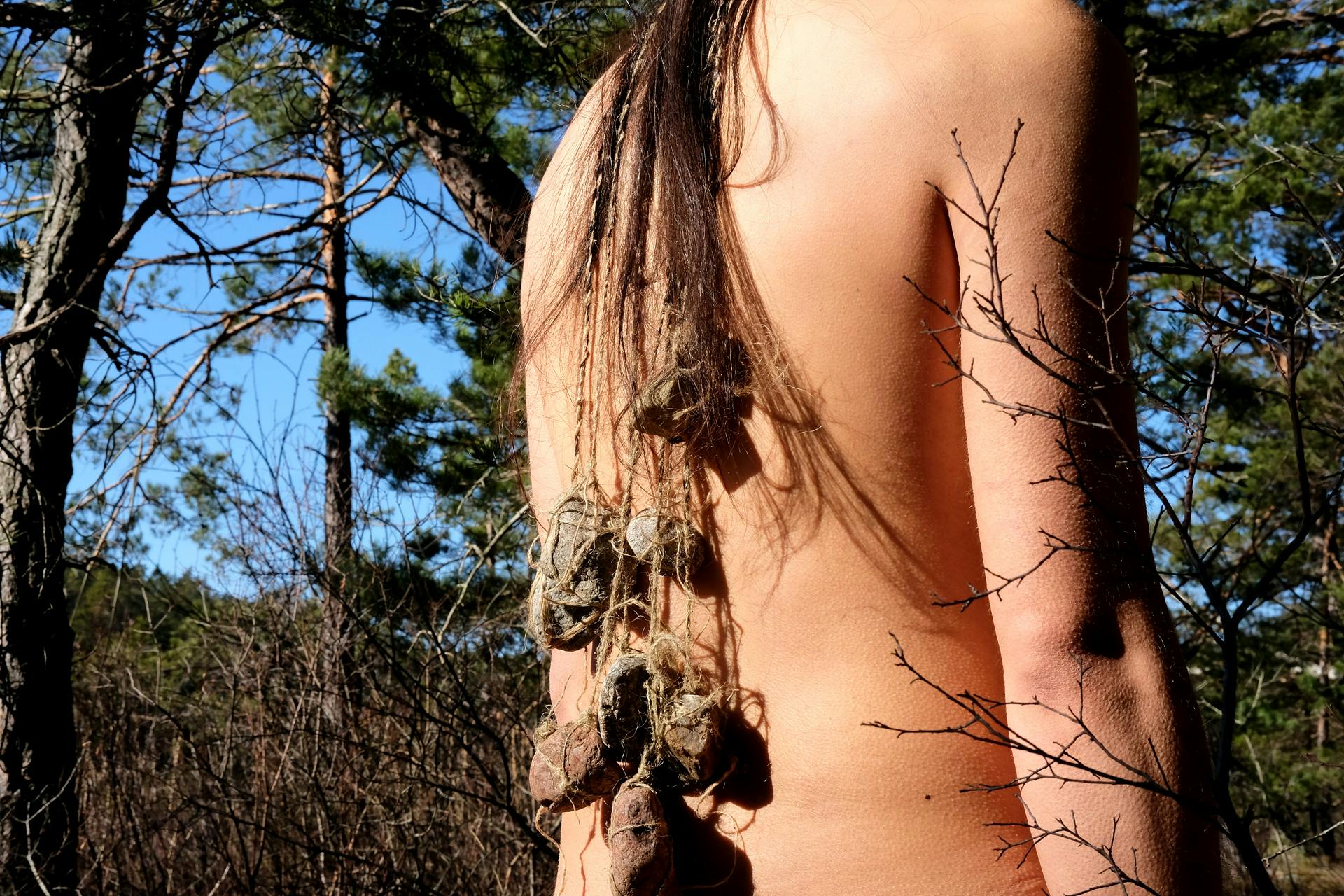
I bring models and I tie their naked bodies in the cold. The rope grows from their own hair fibers, erasing the body-borders and the weather erases the autonomy of the human body, creates an instant notion of where the body is an entity: the models shake, turn blue, get goosebumps, get runny noses. The weather places the body, immediately. I ask my models to breathe deeply, to close their eyes and I practically run around them with my camera, finding moments of stillness while counting the seconds, ask the models if they are OK and the second it's over I bring the blankets, the clothes, the tea, the comforting words, everything. We find a gap in time to explore the extension of the body, together. The body melts into the place, cramps up into its own self, finds help from there and then to focus and find peace in the here and now.
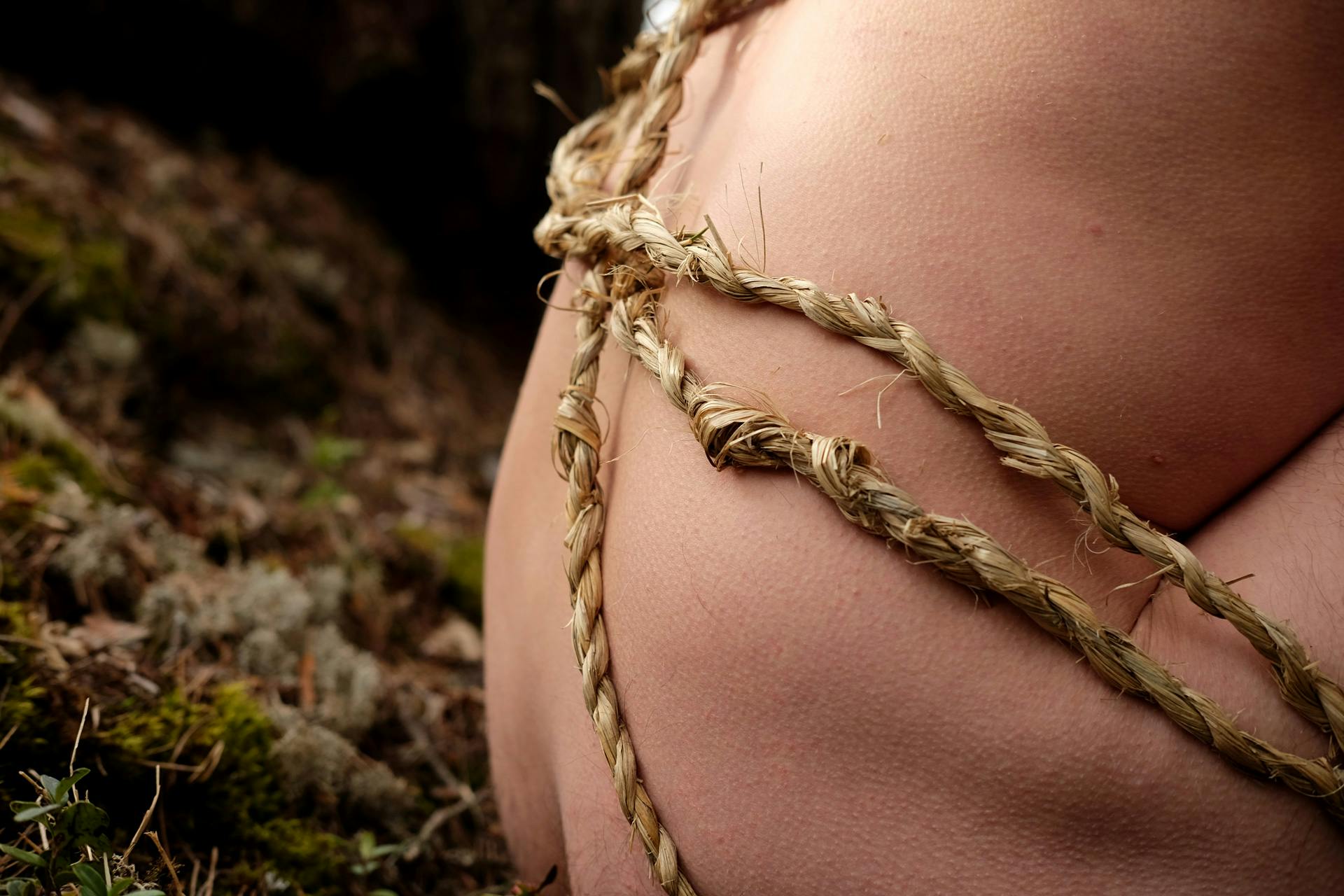
The rocks do not shake or get blue, their needs are different from the humans. I use the same frail plant rope I make from last years plants, tie the rocks gently into a harness and hang them from various spots. I use just as much rope as is necessary to hold the weight; the fibres crack and tense as the weight of the rope articulates a single task: to hold. There is always a moment when I hang the rock, the seconds where I gradually give more and more of the rocks body weight over to the ropes, where we all seem united in the same question: will you hold? It is OK if it doesn't, and it's not as interesting when the answer is immediate and the rope is, without question, strong enough. I prefer the moment of suspense, the moment when we don't know, because that's what brings the presence.
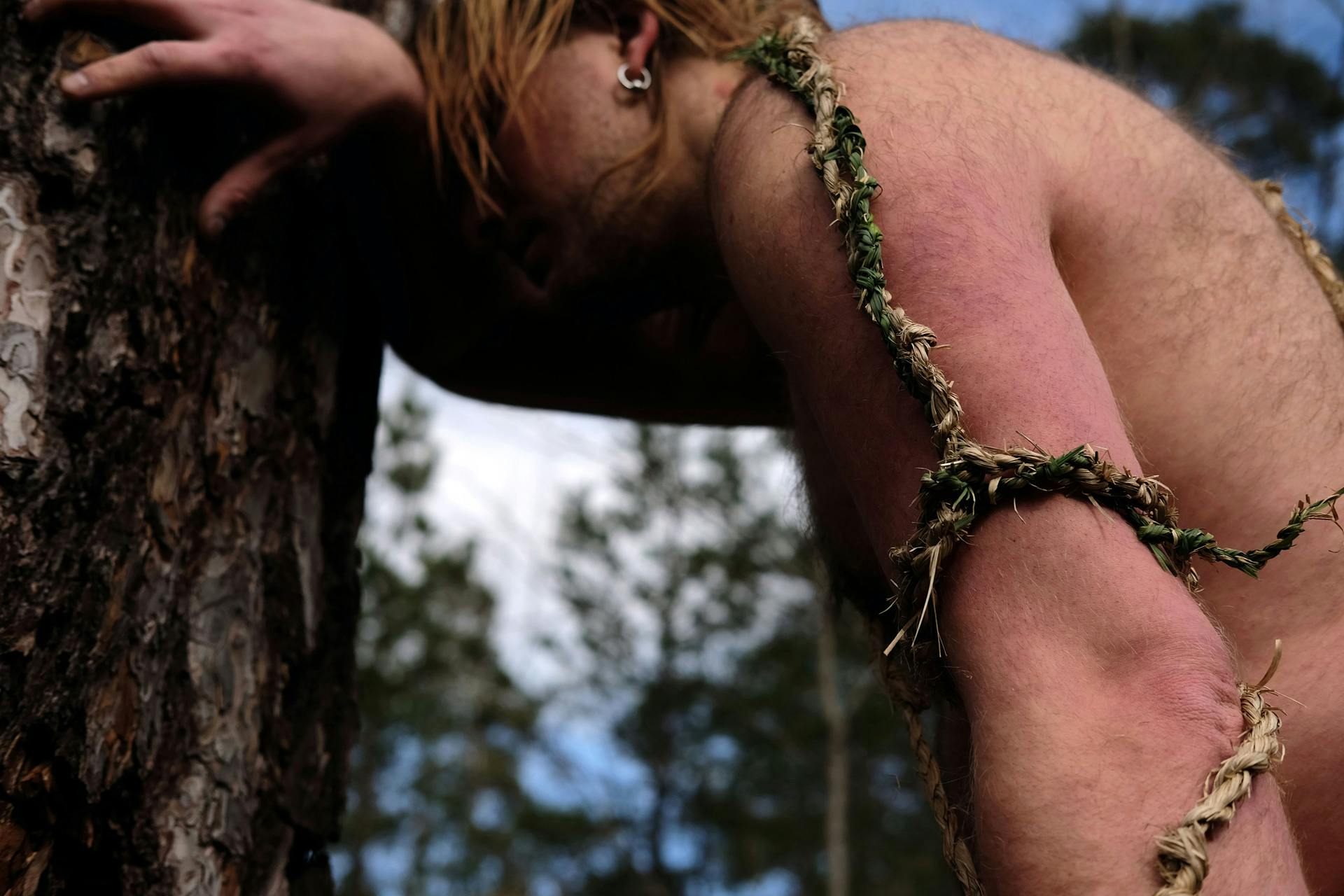
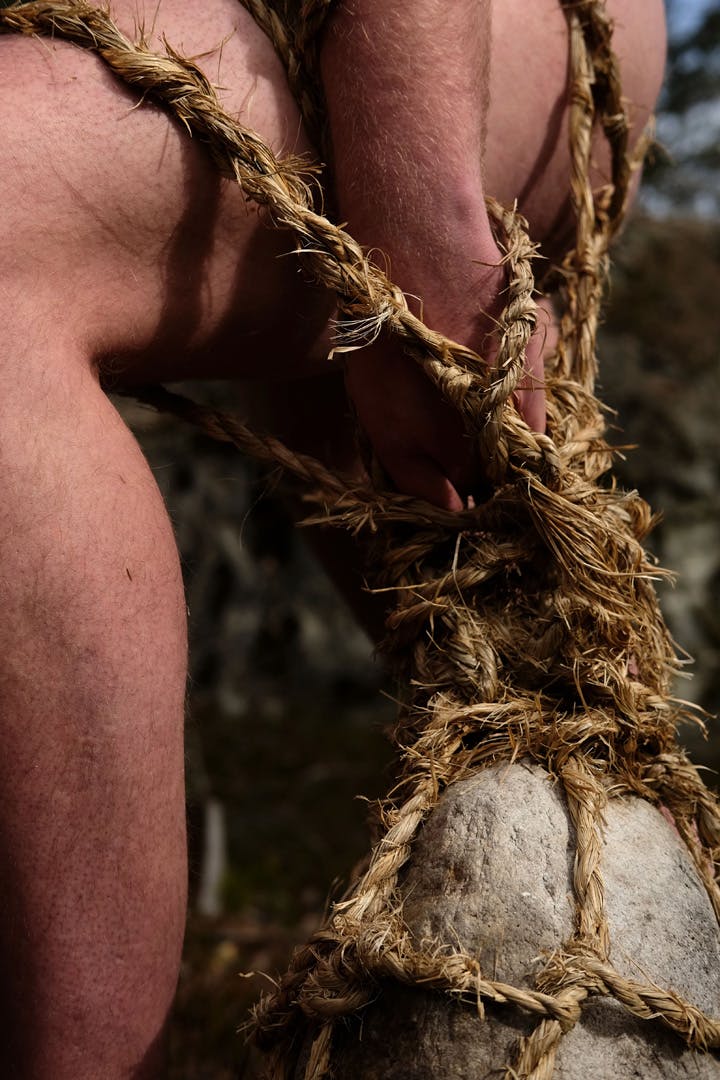
Even if the rope holds the rock, the relationship is always temporary. I collect the footage fast, as with the human bodies, always keeping my attention on the temporary state of the rocks. I am documenting a moment – even though the rock doesn't get cold or isn't under the risk of taking various damage, the bodies are still in a temporary relationship with each other, in the weather and in the moment. It places my focus there, with them, and I am not in a position to take any of it for granted.

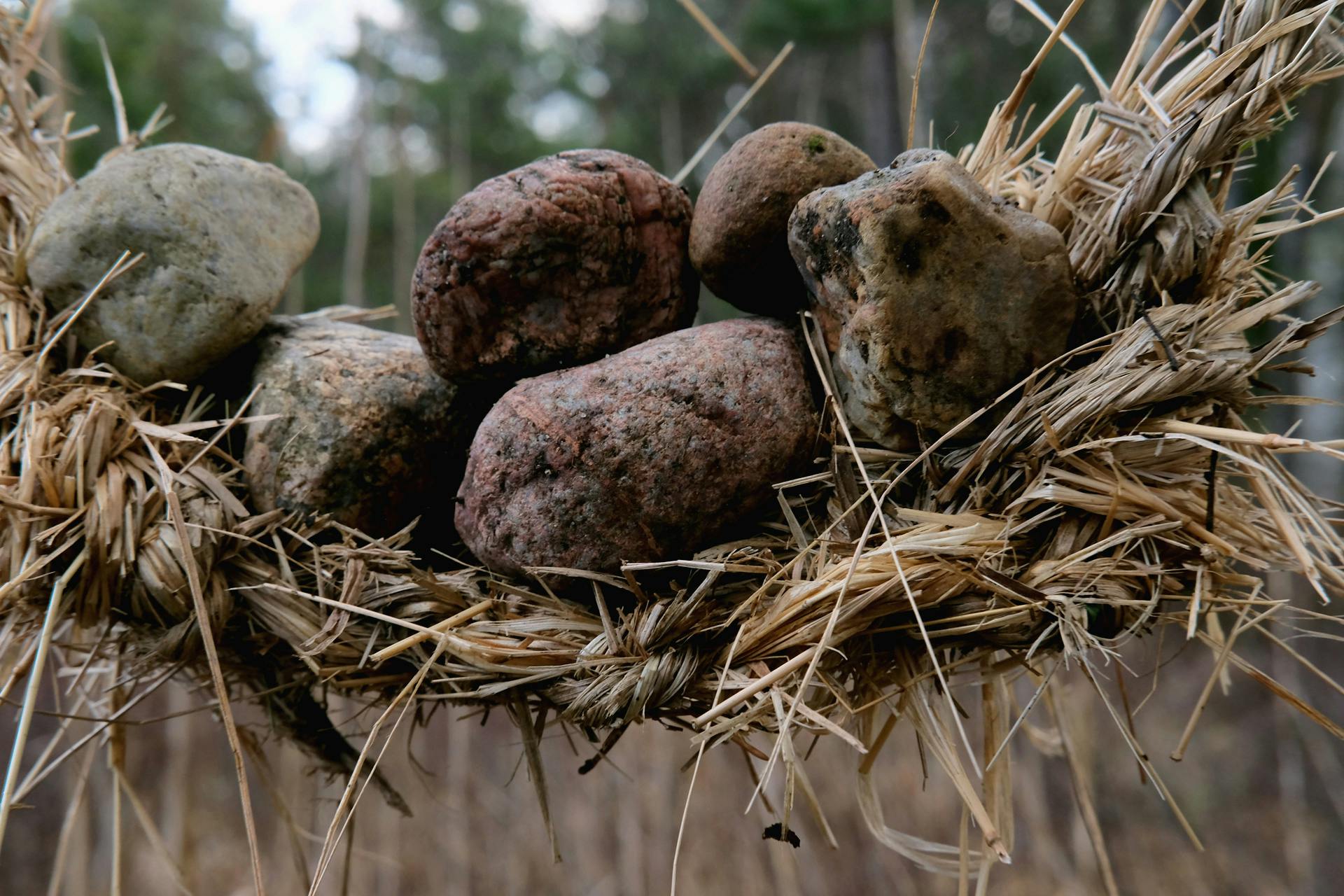
In the end it got to be a video installation. It is my way of bringing the moments into a still, white gallery space.
I edited three films to be projected simultaneously onto three separate white screens, made of cotton sheets. They are about 2,5 x 2,2 meters in size. The sheets are installed next to each other with the right and left sheets in an angle, creating a halv-circle where one can stand and be immersed in the films. The shots are played slowly, interchanging, depicting one ”scene” or sculpture at a time. It's mostly close-ups and the bodies, the human-, rock- and nature bodies in the projections are bigger than the person watching. In this way I try to place the present body in relation to the film, make it smaller, maybe more aware.
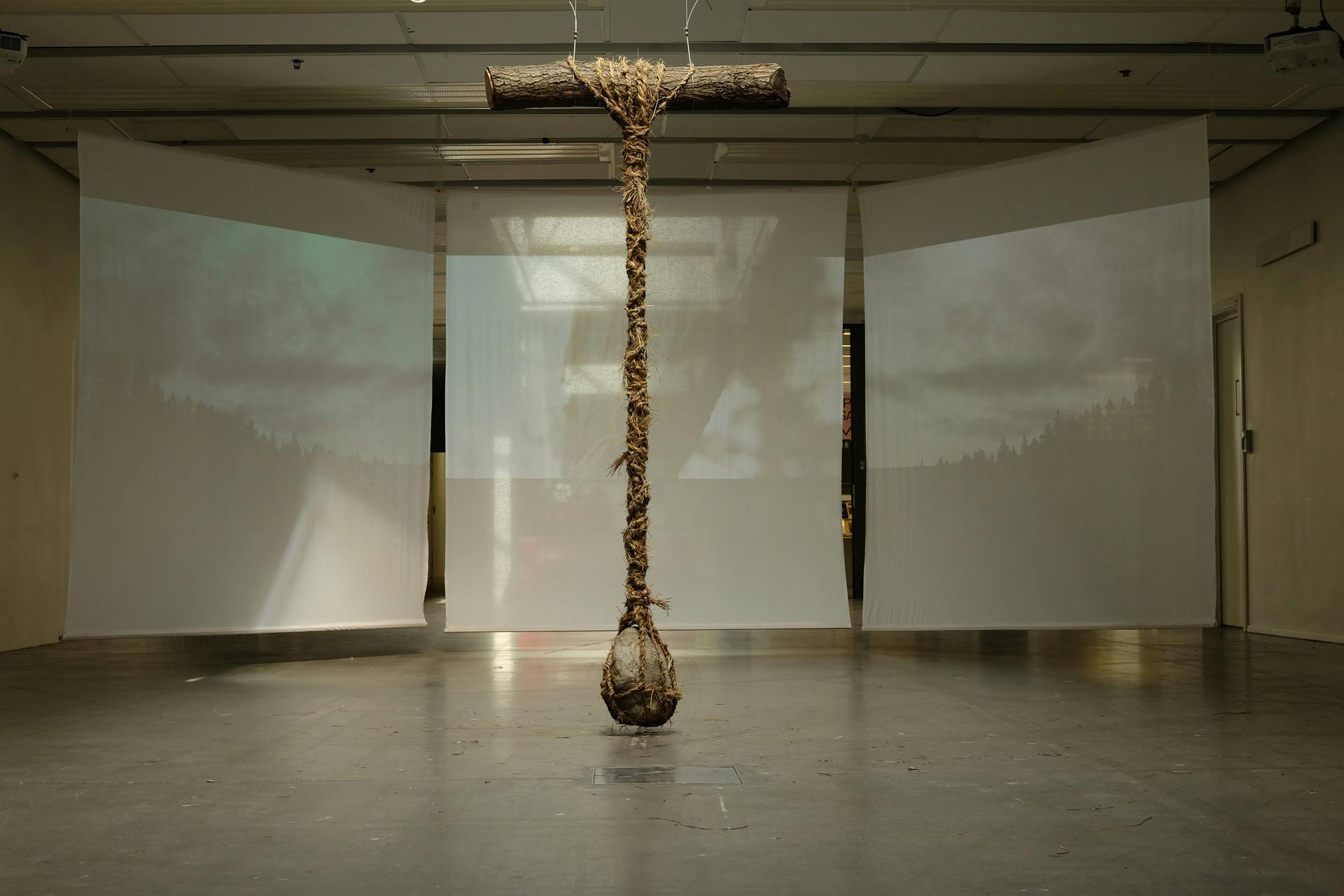
The interchanging images in the film are accompanied by sounds; no words, but fitting sounds from the moments in the images: the sound of running water when the image is depicting a creek, the sound of strong wind that ruffles the hair of the model, the sound of the plant rope straining and cracking as the rock weighs it down. Nature sounds, making the white space into somewhere else.
At the centre and in front of the video instalation hangs a rock, tied to a tree trunk by plant rope. It is still, hovering a couple of centimeters off the ground. When the skylights above it let in the daylight, it becomes the centre piece as the video projections are barely visible. At night, it becomes a sleeping silhouette and the focus shifts more easily to the moving images.
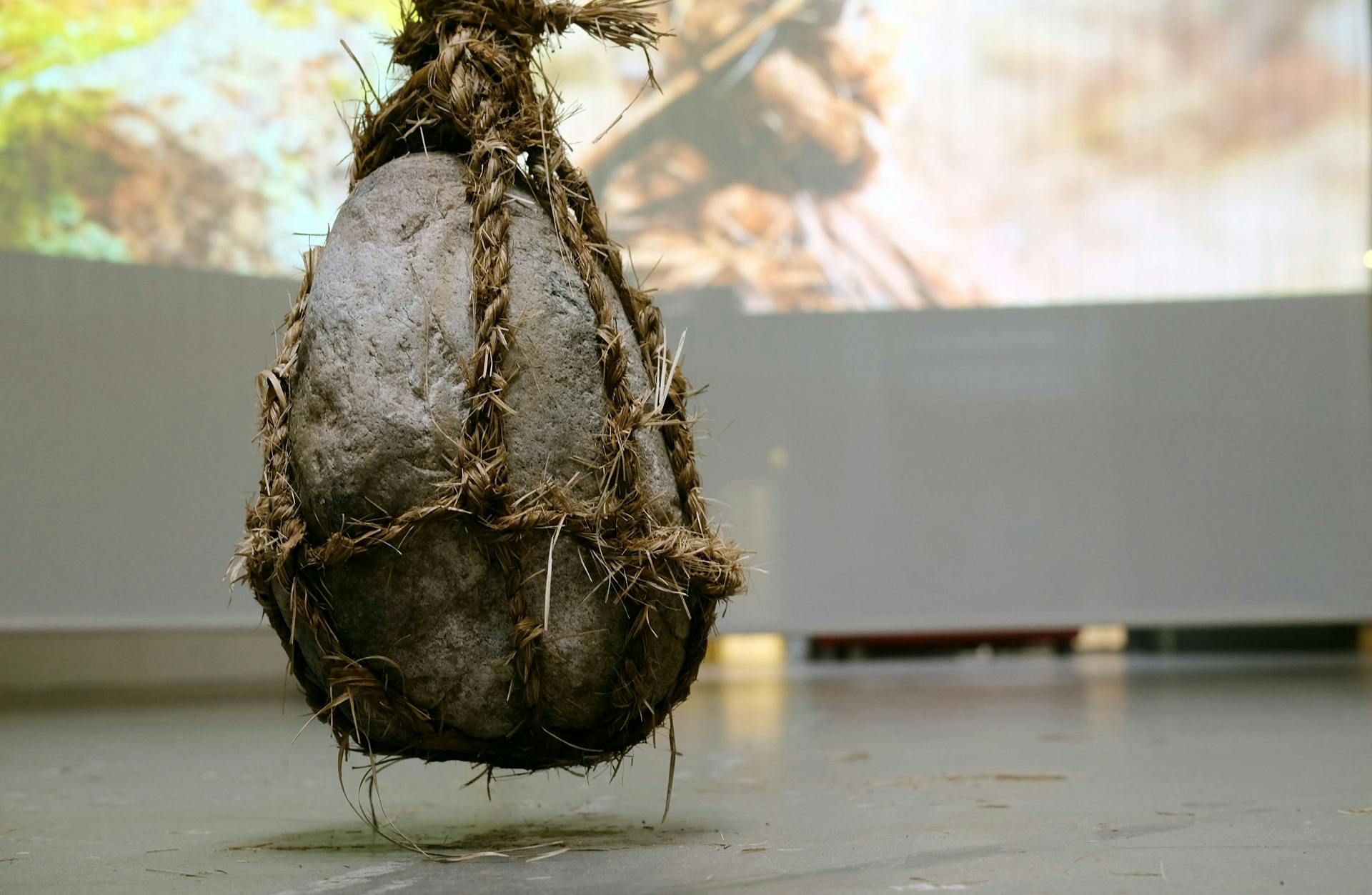
I am grateful to all the people who have made his exploration possible in so many ways. I am so grateful to have been able to begin this journey. A special thank you to all my models: Daniel Baumann, Emelie Renvert, Eri Hanserkers, Hugo Scherwin and Stenhårstrollet.
This project can also be seen represented on the online platform Para-ll-els, in Konstfacks digtal spring exhibition and Klimt02.
My exam presentation can be read or listened to here.
Anyone who wishes may also take part of my bachelor thesis.